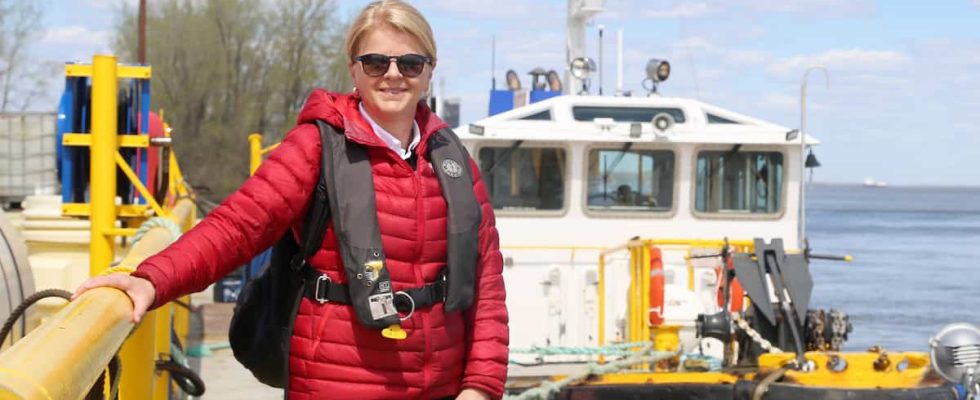The St. Lawrence River no longer holds many secrets for Captain Manon Turcotte, at least the portion between Trois-Rivières and Montreal.
• Read also: At the heart of our maritime industry: things are going well on the river
• Read also: At the heart of our maritime industry: the future of containers goes through Contrecœur
• Read also: At the heart of our maritime industry: the Port of Québec on a green mission
For more than 20 years, it is she who pilots the many boats that take the seaway at this height to bring them to their destination.
From Les Escoumins to the Great Lakes, pilots like her board ships to assist the captain and his officers. Navigating the river is not easy. There are the unpredictable currents, the presence of shoals, the calculation of the tides that must be taken into account, not to mention the sometimes heavy river traffic.
“It’s navigation that requires good expertise. My role is to make life easy for the captain so that he can get to his destination without a hitch,” explains Manon Turcotte, who works for the Corporation des Pilotes du Saint-Laurent.
She boards all types of boats, cargo ships, tankers, cruise ships, etc. It must therefore ensure that passengers and cargo travel safely.
“We are always on different ships with crews that we know little or nothing about. You also have to deal with often changing weather conditions, with the presence of ice in winter or a very low water level during a drought in summer. When you’re on a container ship on a windy day, you have to be particularly alert. »
In short, even if the route is always the same, the pilot does not have time to get bored during the trip, which lasts from five to ten hours, depending on the direction of the current.
Farmer’s daughter
Nothing predestined Manon Turcotte for a career in the maritime industry. Rather, she is a daughter of the land, having grown up on a farm in the fourth row of Les Boules, a village in Bas-Saint-Laurent now annexed to Métis-sur-Mer.
Even though she spent her childhood on the banks of the river where she saw the boats go by, she had never dreamed of boarding there.
It took a friend to take her to visit the Institut maritime de Rimouski for the idea of a life at sea to begin to seduce her. She therefore enrolled in navigation technique and followed the long course of training until she obtained the captain’s certificate, the first officer on board a boat.
Before becoming a pilot on the St. Lawrence, she sailed for 15 years as a naval officer aboard oil tankers on the St. Lawrence Seaway to the Great Lakes as well as along the Canadian east coast and in the sea. Arctic. She then left for periods of two or three months.
A car in each port
Seeking a more stable life, she decided to train to become a pilot. “The schedules are more regular even if we work on call. I am informed of my assignment only a few hours in advance depending on the arrival of the boats. I board either from Trois-Rivières [où elle habite] or Montreal. I am therefore obliged to have two cars that I park in one or the other port to return home. The pilots, we have fun saying that we do car management,” says Manon Turcotte, laughing.
With its more stable schedules, piloting makes it easier to reconcile work and family.
“It remains a challenge all the same, recognizes the captain who, herself, did not have children. I wouldn’t be where I am if I had. That said, there are women who manage to balance career and family. It’s a question of choice. »
